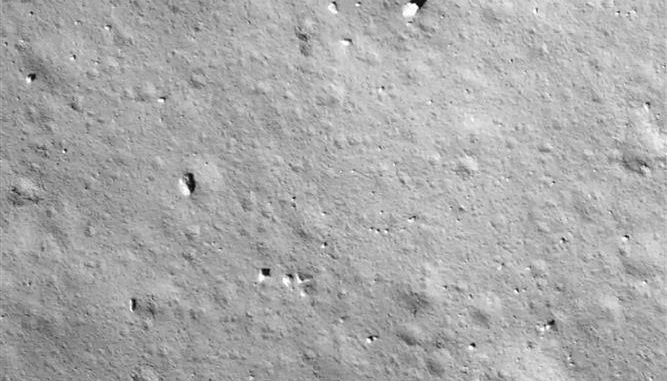
Beijing (TIP): On the most complex mission to the Moon, China’s Chang’e-5 probe drilled the lunar surface, collected samples on Wednesday in the first such effort in over 40 years and began preparations to bring the precious soil to earth, the country’s space authority said. The Chang’e-5 probe has collected Moon samples after landing on Tuesday, the China National Space Administration (CNSA) announced on Wednesday.
The unmanned probe landed in the area called Oceanus Procellarum, also known as the Ocean of Storms, on the near side of the Moon and started rolling out its solar panel wings and unlocking some of the payloads on-board to prepare for sample collection. The lander first drilled a 2-meter-deep hole, digging out soil, and sealed it up at 4:53 a.m. on Wednesday. Next, it will use its robotic arms to scoop up more samples from the lunar surface for backup, state-run media reported.
About two kg of samples are expected to be collected and sealed in a container, CNSA officials said.
State-run media has shown photos of the lander on the lunar surface after it landed successfully.
“We designed two methods for the spacecraft to collect samples. One is to sample the lunar surface, and the other is to drill underground. The two methods could increase the chance of getting more diverse samples,” Peng Jing, deputy chief designer of the Chang’e-5 probe said.
It is China’s maiden attempt to retrieve materials from an extra-terrestrial body.
The United States sent astronauts to the Moon to collect samples. In the Soviet Union’s unmanned lunar sampling missions, the spacecraft took off from the Moon and returned to Earth directly.
The US space agency on Wednesday congratulated China for the Chang’e-5 mission. Nasa’s top science official, Dr Thomas Zurbuchen, said he hoped the international research community would eventually get the chance to analyse any samples sent home.
“When the samples collected on the Moon are returned to Earth, we hope everyone will benefit from being able to study this precious cargo that could advance the international science community,” he tweeted.
Explaining why China chose to do what has been accomplished by the US and Soviet Union much earlier, Pei Zhaoyu, deputy director of the Lunar Exploration and Space Program Centre of the CNSA said that China chose a complicated technological approach including unmanned rendezvous and docking in lunar orbit, and could bring back more samples and lay a technological foundation for manned lunar missions.
The samples collected on Wednesday, will be sealed in what scientists have described as a long “sausage-like package”. “Samples have to be sealed up in case any contamination occurs during the course back to earth,” Luan Enjie, the chief commander of China’s first lunar mission told the China Central Television (CCTV).
“The Moon environment is very different from the Earth, so samples need to be stored in a very clean container,” he added. These soils obtained from the Moon are expected to provide information about its geological evolution and offer insights into solar activities in the universe, according to the mission team.
The Chang’e-5 probe includes a lander, ascender, orbiter, and return vehicle. The sealed packages will be stored in the ascender, which will lift off from the Moon’s surface to transfer the samples to the returner and orbiter waiting in lunar orbit. At the proper time, the returner will then separate from the orbiter and carry the samples back to Earth, finally landing in north China’s Inner Mongolia.
A no stranger to the Moon, China launched its first lunar probe, Chang’e-1 in 2007 which orbited 200 km above the Moon and mapped 3D images of the lunar surface followed by Chang’e-2 in 2010 which had sent high-resolution photos of the Moon’s surface.
Chang’e-3 was launched in 2013 which softly touched down on the Sinus Iridum 12 days later.
The Chang’e-4 probe was launched in 2018. It made the first-ever soft landing on the Von Karman Crater in the South Pole-Aitken Basin on the far side of the Moon. A major space power, China launched its first Mars mission ‘Tianwen-1’ on July 23 this year. The Mars spacecraft which included an orbiter, lander and rover is on its way to the red planet. PTI





Be the first to comment